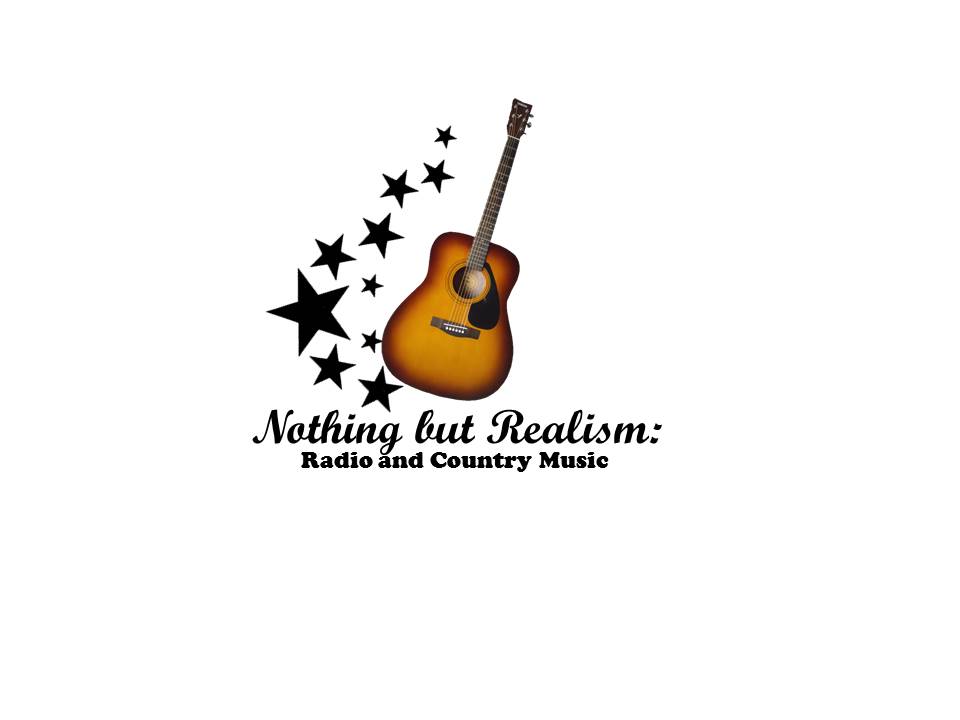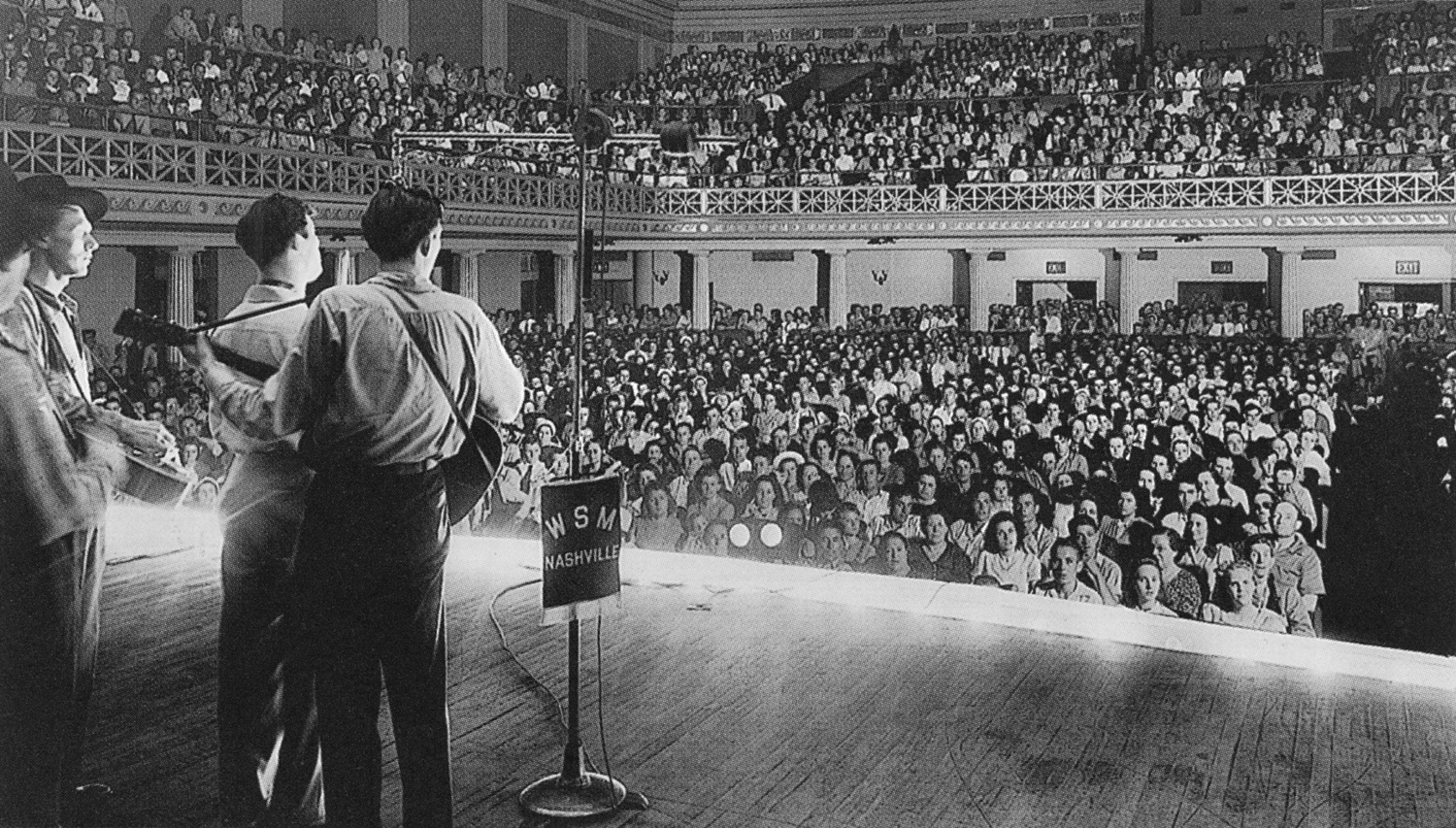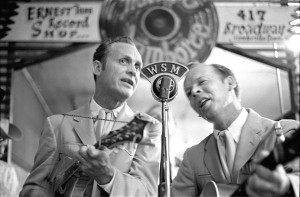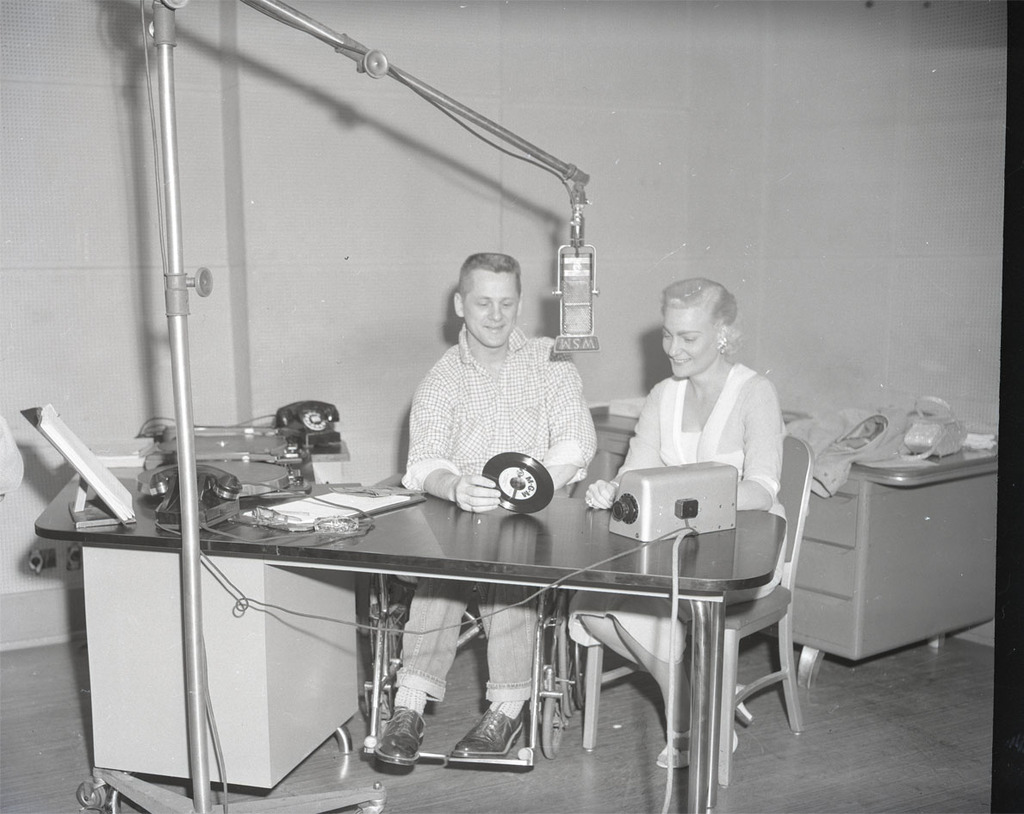Industry Forces and the Business Behind the Microphone
An essential feature of the radio industry in regards to its relationship with country music was its ability to tap into the rich traditions of rural Southern music and reflect it back to a wider audience through strategic means. Bill C. Malone notes the emergence of that phenomenon among the earliest country stations which established across the South and Midwest during the 1920s: “Broadcasting executives at stations like WBAP, WSB, WLS, and WSM were the first members of the commercial fraternity to devote any consideration to the musical interests of America’s rural and working-class population.” At that time, most independent radio stations were small and had low signal strength, but several had nearly national coverage. The rural and working-class audience’s musical interests were equally as unique as its values regarding commercialism and advertising, which came to distinguish country music radio. Indeed, the genre was more closely linked with advertising than any other, and also was linked with the cheapest forms of advertising. These involved sponsors with primarily rural constituencies, such as Sears, but also those from high-risk, low-profit industries such as food staples producers and medicinal companies. In addition, local retail stores with farm and working-class clientele, most commonly flour mills, feed and seed stores, hardware stores, and ready-made clothing shops would sponsor country music groups on independent stations. Those groups would be paid by the sponsor to play regular programs and often assume a persona that was representative of the company.
The relationship between advertising through radio and country music can be seen as symbiotic in nature: many advertisers used the genre as part of a coordinated regional campaign strategy and could achieve broad regional or national coverage at local and independent rates, and despite the fact that country was identified as a product of the most heavily commercialized branch of radio broadcasting, it was also seen as a successful genre that emerged outside the established popular music industry. Diane Pecknold provides a further analysis of this relationship:
“Radio listeners seemed to have little difficulty reconciling commercialism with folk production. The local nature of most hillbilly broadcasting helped make the dividing line between audience and artist, amateur and professional, relatively permeable… unlike the preservationists of the middle class, hillbilly fans did not perceive commercialism and authenticity as mutually exclusive. Indeed, commercialism functioned for some as one way of assigning social and aesthetic value to cultural creations that were often disdained by the urban cultural elite.”
In 1938, Rural Radio magazine held a contest whereby a prize was offered to the readers who wrote in with the best pros and cons responses to the question of whether rural listeners wanted different kinds of programming than their urban counterparts. The winning letter for the ‘pro’ side read:
“City folks have a different attitude towards entertainment, because they have the opportunity to see and hear the features in the auditorium itself. They become used to higher class entertainment, and thus appreciate concerts, operas, orchestra, etc. These features are enjoyed by the city dweller, but have no place in the heart of the farmer. The farmer lives simply, and works close to nature. He needs recreation, and the radio is the best means within easy reach. So tune in to the guitars and banjos, with all the happy voices that go with them, and really enjoy yourself!”
The audience that was tuning in, especially in the subsequent decade, largely represented the adult market, which resulted from the broadcasting industry’s mid-1940s attempt to modernize the genre’s sound. As Jeremy Hill comments,
“The tantalizing goal of crossover success hinged on the ‘downhome’ appeal of country artists harnessed with a less twangy vocal and instrumental sound that could reach those record buyers turned off by the sounds of hillbilly music.”
That goal was further compounded by dramatic changes within the industry during the 1950s, which prompted broadcasters to expand their rebranding efforts. One important transformation was the introduction of the Top 40 radio format, which made recordings cheaper than live performances and caused radio stations to begin looking to capitalize on the emerging emphasis on record-driven, chart-driven, chart-measured hits. Standardized playlists made collecting and selecting songs easier and also made stations’ prepackaged sets more attractive for advertisers. These playlists cut across multiple genres and dramatically reduced the number of country-only radio stations, while the new emphasis on recordings over live performances gave performers, studios, and labels the opportunity to make money and build reputations outside of traditional country institutions such as the Grand Ole Opry.
Another significant factor in the 1950s shift was the advent of rock n’ roll, which blurred the lines around what constituted the country sound in part due to rural roots-turned-rockabilly performers such as Elvis Presley and Johnny Cash. Generally, the consensus was that country music was defined by quiet, simple songs sung with some minor pop instrumentation. Faced with the threat of rock in 1955 and 1956, country disk jockeys began arguing that fans should not panic at the possibility of country dying at the hands of the rough new genre, and that country artists should sing country songs and not try to imitate other styles.
Also during the period, the Country Music Association (CMA) was formed, and took up the challenge of defining and defending the genre. Its first pronouncement of its public relations strategy came at the 1958 WSM Disk Jockey Festival in Nashville, when keynote speaker and former WSM program manager Jack Stapp established national exposure for the genre as the organization’s prime goal:
“If country music does not become more accepted nationally… if we do not saturate the country with good publicity, if we do not educate the public, we must be prepared to suffer the consequences.”
This excerpt reveals the CMA’s grim outlook on the future of country music as well as their tough resolve to combat future deterioration. Their projections were not ill-founded: both the rise of rock n’ roll and the introduction of Top 40 contributed to a decline in the number of country music stations across America, which became a main feature in the CMA’s vision of a struggling genre.
In addition, the CMA (quite often correctly) believed that despite country’s general move closer to pop in the face of rock, outdated conceptualizations of hillbilly music still held sway with national journalists, station managers, and advertising agents, which implied persistent assumptions about the taste, intelligence, and even hygiene of country musicians and fans. CMA leadership sought to continue urging networks and advertisers to move beyond those misguided misconceptions in order to make country music a truly national phenomenon. Their main strategy was to emphasize that country fans were no longer rurally based but modern urban consumers, and, as a result, new country stations could be profitable for sponsors. In a 1960 CMA mailing to advertising agencies, the organization wrote:
“No longer the toe tappin’, fiddle-twanging music of the backwoods, country music has emerged from the darkness to become a highly commercial format for local radio. This modern ‘folk’ music can be programmed to a vast consuming audience in any metropolitan city.”
Another CMA letter to disc jockeys and radio station managers read:
“There may be some frankly ashamed to admit that they listen to ‘Corncob Hoedown.’ The industry has come a long way in recent years and no one can deny that Country & Western has grown up. We are not a group of raggedy, country boys and girls with missing front teeth. We have acquired status. In choosing a title for your show, make it one that a listener would not hesitate to tell a friend about.”
Finally, another 1960 CMA mailing to three hundred advertising agency executives and time-buyers stated that the country music audience was composed of
“the every-day working people of any city large or small-- the housewife, mill worker, fisherman, truck driver—in short, the people the advertiser wants to reach.”
A watershed moment for country music came with the clash between broadcasters and the licensing agency, the American Society of Composers, Authors, and Publishers (ASCAP), which was one of the most significant factors in establishing a robust country music industry. Essentially, ASCAP demanded that radio stations pay fees for each song played over the radio on the charge that stations were unfairly acquiring free content by playing licensed recordings. The stations in turn argued that broadcasts to mass audiences provided enough free advertising to justify skipping the licensing fee. In protest, broadcasters conducted a mass boycott of ASCAP songs beginning on January 1, 1941 and formed their own licensing organization, Broadcast Music, Inc., which opened new doors for promoting songs to a wider audience and raised the music’s visibility through less restrictive membership requirements and compensation structures.
Finally, another significant element of the country music radio industry was the disc jockey. Radio personalities were performers as musicians, actors, or members of an ensemble cast, and constructed personas which often allowed them to become well-known even nationally. Billboard estimated in 1950 that around 1,400 deejay shows aired each week across the United States, and the average broadcast time of the country deejay was eleven hours. As their numbers and notoriety increased, the deejays developed informal networks to share ideas and problems, which became a significant means of standardizing programming. Diane Peckford comments that
“Just as the barn dances of the prewar era had been dominated by a rotating and expanding group of personnel based initially at the WLS Barn Dance, the deejays of the postwar period moved from station to station, working with each other and sharing programming ideas.”
Joe Allison is quoted by Peckford as describing: “The Country Disc Jockey is a man respected in his community and his profession- and through his own initiative and promotional ability is crusading day and night to sell rural songs… as a real form of true American entertainment. [He] is doing this because he believes it himself.”
Of course, this plays into notions of authenticity inherently linked with the traditions of country music, in addition to reinforcing the idea of respectability later emphasized by the CMA. Country deejays thus served as conduits between media and audience, and were the voices of the greater industry of which they were an important part.



